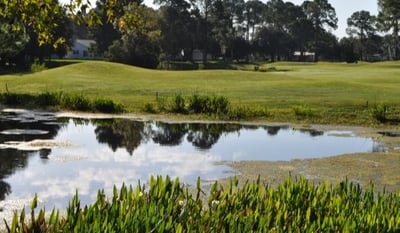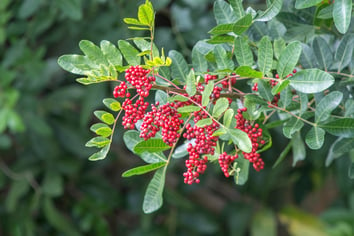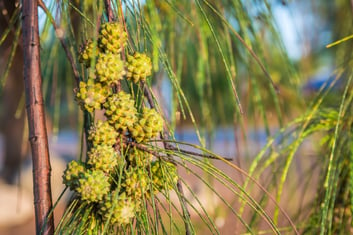
Home / Here on Earth / Landscape Invaders: Invasive Plant Protection
What are Invasive Plants?
An invasive plant is one that is not native to its ecosystem, like a cactus in the arctic. An invasive species may look unassuming and might even be an appealing addition to your landscape, but its very nature is dangerous. As invasive plants are not from the ecosystem in which they are invading, they do not fit properly into that food chain or the environment as a whole.
Without natural predators to control their numbers, these plants grow out of control and can bring several problems to them. Many invasive plant species can cause soil degradation, wildfires, lower quality of drinking water, and cause large-scale tree deaths.
Invasive Species Commonly Found in Florida
- Skunkvine
You can find Skunkvine in at least seventeen counties spanning North and Central Florida. This vine doesn't have any thorns, but that doesn't mean it's friendly.
Skunkvines climb up and around anything they encounter, including shrubs, trees, and flowers, blocking sunlight and adding more and more pressure and weight. Eventually, the vine suffocates and kills whatever it was engulfing, moving on to ensnare a new plant.- Brazilian Pepper
Also known as Schinus terebinthifolius, they are closely related to poison oak, poison ivy, and poison sumac. When you come in contact with its leaves, it can cause redness, itching, and respiratory problems. It's so called the Brazilian Pepper because of it's origins. The invasive plant traveled from Brazil to Florida with the purpose of being used as a Christmas ornament due to it's festive red berries. Today, Brazilian Pepper infests over 700,000 acres in Florida, and it’s aggressively spreading.- Australian pine
Australian Pine refers to several species of trees in the genus Casuarina. This species is native to the Australian outback and Southeast Asia. They grow quickly and aggressively, loving sandy, swampy, and salty places. They quickly colonize areas where hurricanes have destroyed native plants and created a gap in the ecosystem.
Invasive Plants and Integrated Pest Management
An integrated pest management program depends on mother nature’s own processes to confront invasive plants. The technique involves using a plant's natural predators, such as an insect or bird, and introducing this new non-native species in a controlled manner. Aside from this, Integrated Pest Management is about:
- Monitoring and sampling
-1.jpg?width=341&name=DTEL-%20Blog%20(4)-1.jpg)
- Identifying plants and pests in their natural or invasive setting
- Establishing a focused action threshold
- Choosing the appropriate combination of invasive plant and management techniques and applying them professionally
- Conducting Studies and Evaluating Results
If you have a good grasp on the invasive plant species you’re facing and feel confident taking action into your own hands, then you could employ some IPM techniques. However, when it comes to introducing other invasive or non-native species unless you are a professional, forget about it.
Call in Backup
When the pest and invasive plants have taken a liking to your landscape, it becomes difficult to fight them off. Landscape professionals are trained and certified in Integrated Pest Management and can create a customized solution to your invasive pest crisis. Down To Earth proudly employs these professionals. Reach out today.




